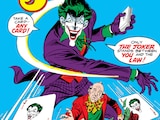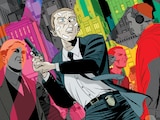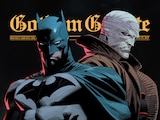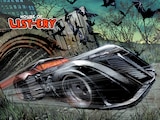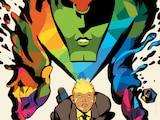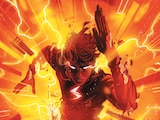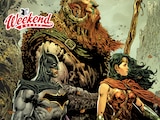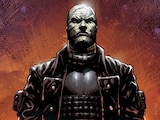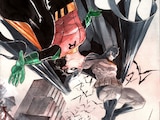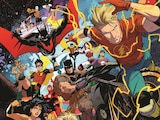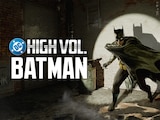Tom King and Jorge Fornés’ thrilling Rorschach maxiseries is now available to read in full on DC UNIVERSE INFINITE, meaning it can be read uninterrupted in one chilly evening, which is a pretty perfect setting for it. Set in the world of Alan Moore and Dave Gibbons’ Watchmen, knowledge of the earlier series may help provide a bit of context, but it’s not required. Think of Rorschach as a spinoff story that explores its own dark corner of comics’ complex legacy rather than a true sequel. For starters, the story seems to end with the death of its titular character. (And no, this isn’t a spoiler. It happens on the very first page.)
If your immediate response is, “Wait a minute, isn’t Rorschach already dead?,” you’re not wrong. This newly killed Rorschach turns out to be a comics artist who was wearing the vigilante's iconic costume as he and a young woman named Laura Cummings attempted to assassinate a presidential candidate. After the assailants are gunned down by Secret Service agents, an unnamed detective is tasked with finding out who they are, where they came from, and why they attacked Governor Turley.
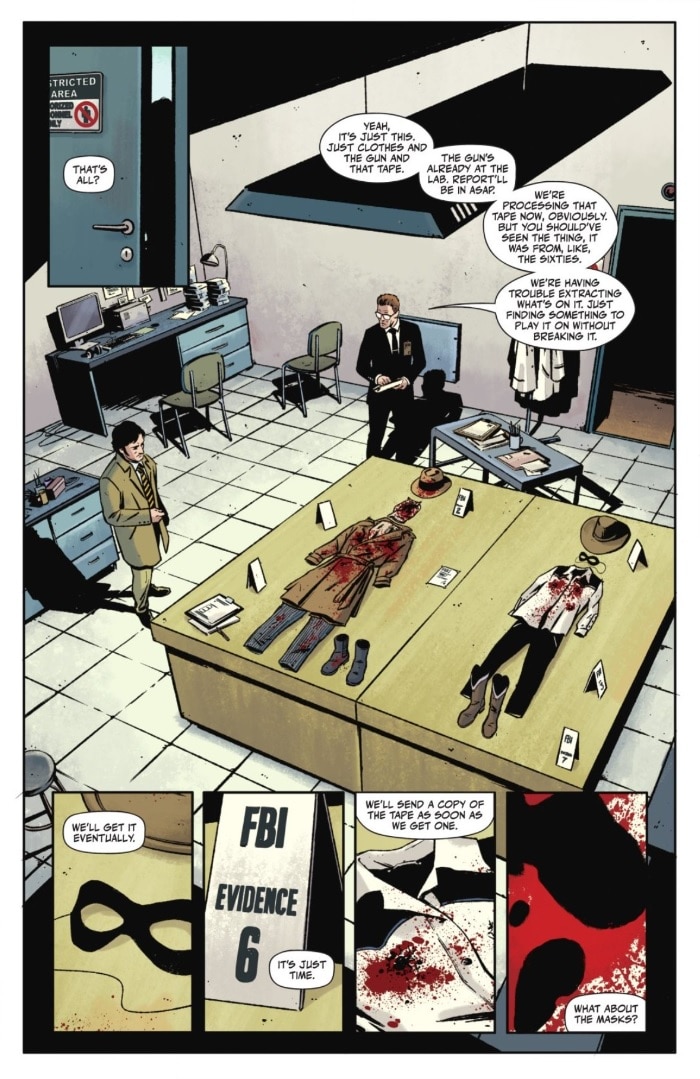
If you love murder mysteries and conspiracy tales, then this Black Label comic will become your newest obsession. It’s often been said that reality is perception and that is a concept that this comic plays with. As the unnamed detective unravels new layers of the mystery, it’s clear that everyone has their own idea about what truth is.
As I read through this thought-provoking—and let’s be honest, pretty provocative—graphic novel, I thought a lot about the power of confirmation bias. For those unfamiliar, confirmation bias is when you have a preconceived theory, so your brain looks for things that support that theory, while rejecting information that counters it. For example, if I thought Batman was left-handed, I would look for panels where he uses his left hand, but purposely overlook clear cases of the Dark Knight writing with his right hand. We all have been a victim of confirmation bias at some point in our lives. Usually, it’s something small and harmless (“the rival sports team is cheating!”) and most of us are able to break out of it when confronted with evidence. But sometimes confirmation bias can take people down dangerous paths, and that’s just what happens in Rorschach.
Laura Cummings’ father is a great example. After the events of the original Watchmen saga, he became convinced that extraterrestrial squids were plotting their next attack against Earth. As his paranoia grew, he came to believe that the squids were already among us. He looked for any piece of evidence that the squids were controlling the people around him, including his wife, whose doubts he took for squid mind control. Laura’s mother was simply using critical thinking, but disturbingly, that didn’t fit in with her father’s worldview, so he rejected the truth and instead shaped his fiction so that her doubts fit within it. In the end, Laura’s father was willing to die for his beliefs. He convinced himself that the squids were now controlling his mind, and asked Laura to put him down.

As I read this series, without realizing it, I found myself becoming the victim of my own confirmation bias. Governor Turley kept on insisting that his assassination attempt was orchestrated by his political rival President Redford. At the time, there was no evidence to back up his claims, but Turley was insistent. Of course, by the end of the story we learn that there is more to Turley’s story than meets the eye. I was so busy looking for examples of confirmation bias, that I had completely missed all the obvious red flags around Turley. That’s how powerful this book is—you wind up going on the same perception journey the characters do.
Although he died decades before the events of this story, the legacy of the original Rorschach can be felt throughout this comic. Rorschach is the perfect character for a story like this, right down to his name. Remember, Rorschach was named after a psychological ink blot test where each viewer would perceive a different image. In other words, Rorschach is wearing a symbol of confirmation bias right there on his face.
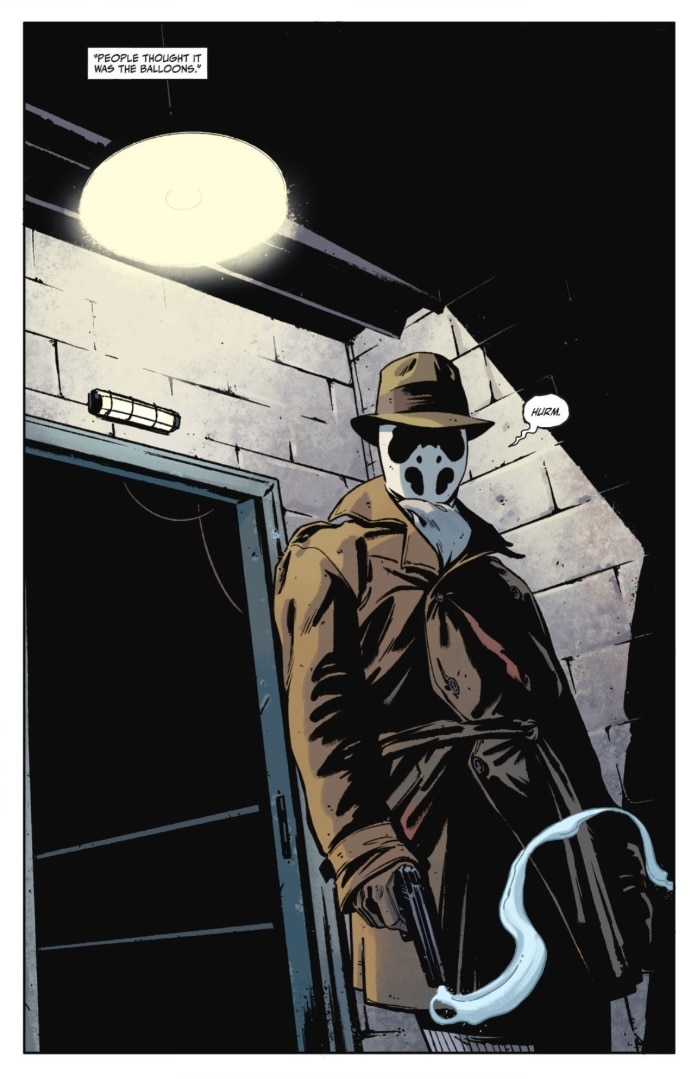
In many ways, the tape Wil Myerson, Laura Cummings and Frank Miller (yes, that Frank Miller) listen to can be considered an auditory Rorschach test. Each person who hears it walks away concluding it says something else. In most cases, they hear what they want to hear. Thanks to confirmation bias, Wil and Laura are convinced they are hearing a message from Doctor Manhattan. Outside forces are able to take advantage of this and convince the duo to attack a Presidential candidate.
Everyone sees a Rorschach test in their own unique way, and perhaps this comic is the same way. I experienced a crime-noir mystery that served as a commentary on confirmation bias, but maybe you’ll see something I didn’t. Like the original Watchmen story that inspired it, there are many ways to interpret Rorschach. The question is, what do you see what you look at these ink blots?
Rorschach by Tom King, Jorge Fornés and Dave Stewart is now available to read in full on DC UNIVERSE INFINITE. You can also find the collected graphic novel in bookstores, comic shops and libraries.
Joshua Lapin-Bertone writes about TV, movies and comics for DCComics.com, is a regular contributor to the Couch Club and writes our monthly Batman column, "Gotham Gazette." Follow him on Twitter at @TBUJosh.
NOTE: The views and opinions expressed in this feature are solely those of Joshua Lapin-Bertone and do not necessarily reflect those of DC Entertainment or Warner Bros.

